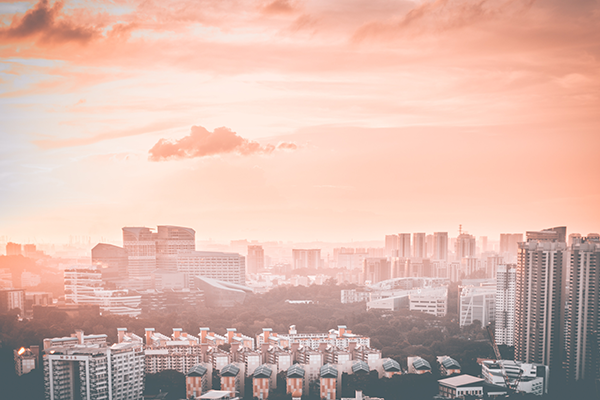
Notice Something Off With The Air? Here’s What’s Actually Happening
Share
Over the weekend, the Pollutant Standard Index (PSI) peaked at 108 in the northern parts of Singapore. This brought the air quality into the unhealthy range. The last time Singapore’s PSI entered the unhealthy range was in November 2019.
It has become an unfortunate reality that poor air quality has become a seasonal occurrence. What’s more, the recent detection of a hotspot in Johor saw the recurrence of hazy conditions that are predicted to stay in the next few days.
Several steps can be taken to protect ourselves against such conditions. However, we first need to understand the conditions affecting us. While we are no strangers to haze, the increase in ozone levels is a novel problem for many of us.
To get a better understanding, we must first know what exactly ozone is. Simply put, ozone is a gas made up of three oxygen atoms. The ozone layer is a layer of gas that can be found in the upper atmosphere that shields the Earth from harmful levels of ultraviolet rays.

Unfortunately, these benefits are canceled out by the harmful effects it has when found on ground level. Ozone found here is referred to as “bad ozone”. The gas is a very chemically volatile and reactive substance that has adverse reactions towards organic matter. It can damage the mucus membranes in your lungs, nose, eyes, and mouth. Prolonged exposure could lead to chest pains, throat irritation, and coughing.
This is the reason why ozone is one of six pollutants (particle matter, fine particle matter, sulphur dioxide, carbon monoxide, and nitrogen dioxide) measured when calculating for PSI. The PSI 108 recorded over the weekend was in fact due to the rise in ozone levels.
Unlike most pollutants, ozone is not a direct product of emissions. Instead, it is formed when other components in the air react with one another under specific environmental conditions (in the natural environment, it is also formed during lightning strikes!). Lately, Singapore has been experiencing a dry spell and relatively clear skies. This, along with pollutants in the air form the perfect conditions for ozone production.

A natural way “bad ozone” is cleared from hydroxyl radicals which is formed from water vapour. With little to no rain, there is little environmental cleansing.
Cutting down on outdoor activities is one step. This shouldn’t be that difficult considering the pandemic conditions we are currently living under. That being said, staying indoors, whether at home or in the office, does not guarantee absolute safety from both haze and ozone.
Air purifiers are effective in ensuring cleaner air quality in confined spaces. While particle filters are useful for certain pollutants in haze, they are not effective against harmful gases such as ozone.
One solution can be found in activated carbon. It has been proven to remove up to 70 percent of ozone in the air as opposed to using regular filters which produced negligible results (Fisk et al., 2009).

As mentioned earlier, ozone is a very volatile gas. Activated carbon filters contain molecular spots that trap ozone molecules. Therefore, it is important to chose the right air purifier lest you end up circulating the same dirty air. The Soehnle Airfresh Clean 300 and Airfresh Wash 500 are the perfect air purifiers for your home.
Having cleaner air at home not only reduces the adverse effects of both haze and ozone, but will also improve your overall quality of life. This is especially so for households with asthmatic members, children, pets, and people having difficulty with sleep.
We don’t know how long these conditions will last. What we can do is control the conditions in our own households and activities.
_ _
Our Leifheit Soehnle Series Airfresh Clean 300 Air Purifier is built with an advanced 4-level filtering system (pre-filter, EPA filter, activated carbon filter, UVC light) that effectively cleans your air by removing 99.2% of all particles greater than 3.0 µm from the air.
Allergy-friendly (ECARF approved), flexible 3 power levels, adjustable timer function, removable filter, and night mode.
